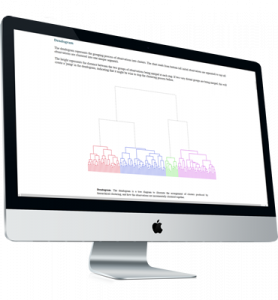
Conjoint analysis
Get answers for the most frequently asked questions about the Enginius conjoint analysis module. For a quick overview, we suggest you check the introductory video first.
Conjoint analysis in a nutshell

The Conjoint Analysis model is widely employed for designing new products.
It is a procedure for measuring, analyzing, and predicting customers’ responses to new products and to new features of existing products.
A conjoint analysis enables companies to decipher customers’ preferences for products and services (provided as descriptions or visual images) into “partworth” utilities associated with each option of each attribute or feature of the product.
Firms can then recombine the partworths to predict customers’ preferences for any possible combination of attribute options.
Firms can use conjoint analysis to:
– Design new products that maximize customer utility.
– Forecast sales/market share of alternative product bundles.
– Identify market segments for which a given product concept has high value.
– Identify the “best” product concept for a target segment.

Download the tutorial

To download the Enginius tutorial in pdf format: (1) Follow the link below. It will open an example data set, then (2) Click on the link in the upper-left corner of the screen.
Featured videos
Conjoint analysis is a powerful tool to understand customers’ preferences, but it can be hard to grasp at first. In our experience, demonstrating in the classroom how a conjoint study is designed, and how data is collected, can go a long way. In this video, we demonstrate how to run a conjoint analysis from scratch, in the classroom, within a few minutes, and in real time.
Frequently asked questions
In our experience, typical Conjoint studies using off-the-shelf software have 4 to 6 attributes, each with 3-4 levels. However, much larger numbers of attributes and levels could be accommodated using specialized data gathering and specialized software.
Commercial studies with more than 30 attributes have been successfully executed.
If there are more than 6 attributes, it might be useful to combine one or more attributes into a single joint attribute.
In our experience, up to 20 ratings or choice tasks would be reasonable before the respondents become tired, or bored with the tasks.
One reason is that conjoint evaluations require respondents to consider complex product features, or complex tradeoffs even if the features are simple.
If the design requires more than 20 tasks, you could consider the following options:
(1) distribute the tasks over two or more time periods for the same respondent (however, some respondents may drop off the study),
(2) provide monetary or other incentives to keep the respondent engaged on the task,
(3) distribute the tasks among several respondents who are “look-alikes” using methods such as Hybrid Conjoint Analysis.
It is just a term to indicate the partial value or utility associated with a specific product feature (i.e., level of an attribute).
It is an indirect measure of how much a customer is willing to pay for each product feature.
In fact, the computed part-worths for each product feature for each respondent are the critical inputs needed for doing Conjoint simulations for identifying or designing “optimal” products.
It is best to start the analysis at the market level (i.e. treating all customers as belonging to a single segment) before evaluating the possibility of creating different optimal products for different customer segments, where customers in each segment share similar part-worth profiles.
If the Conjoint part-worth data are obtained from a reasonable number of respondents (say 50 or more), it would be useful to explore such segmentation. If there are distinct and meaningful segments, Conjoint simulations could be executed separately for each customer segment.
The firm could then assess whether its overall performance/profitability is enhanced by offering products with specific features desired by one or more segments.
The Segmentation module in Enginius allows identification of segments based on partworth.
One thing to keep in mind when executing segmentation is not to standardize the data before analysis. This is because part-worth data incorporate the relative importance of each part-worth compared to the other part-worths and this information would be lost through standardization.



